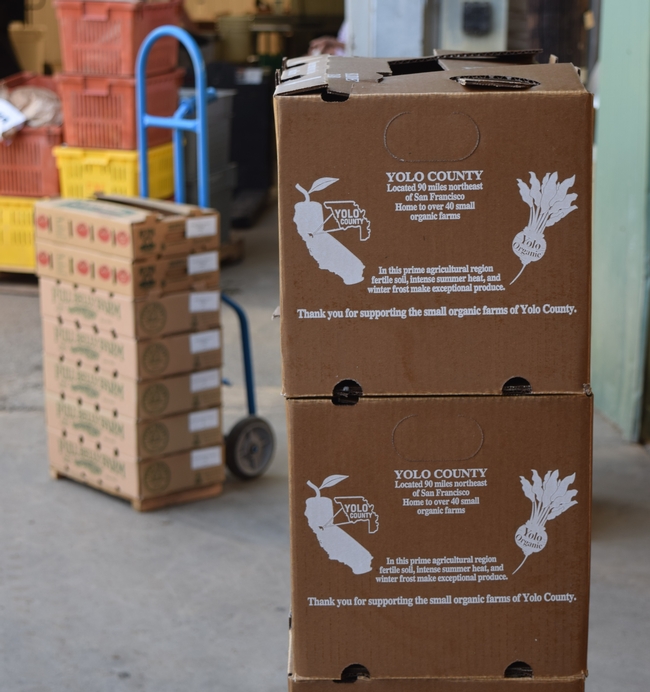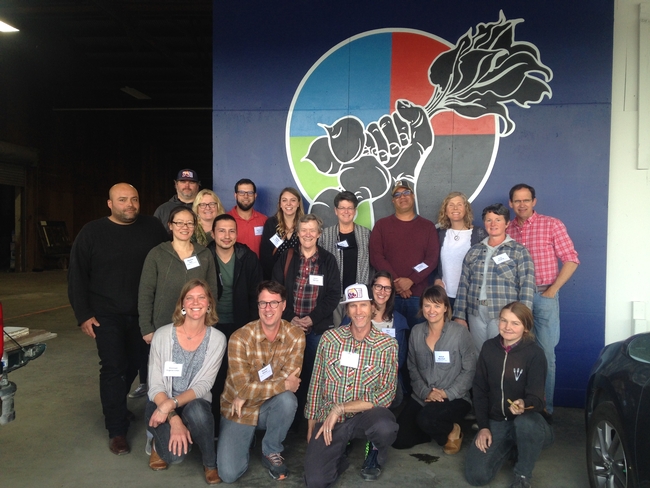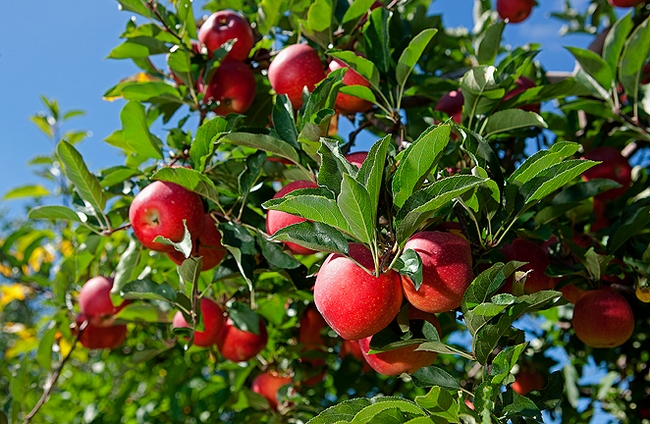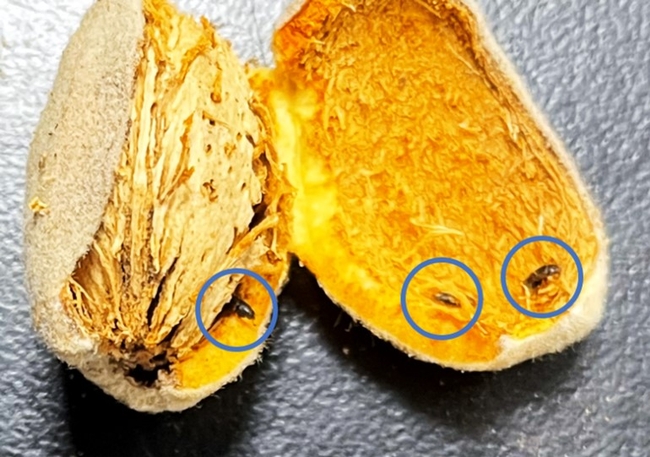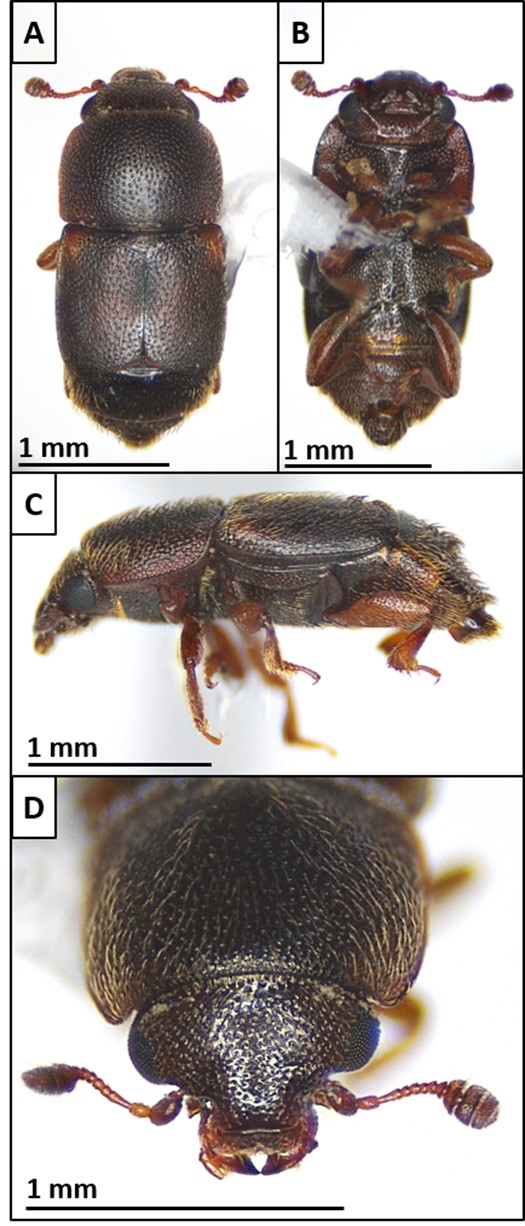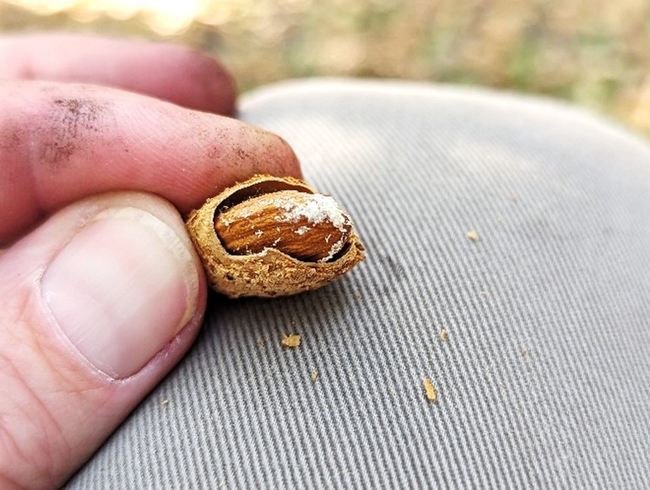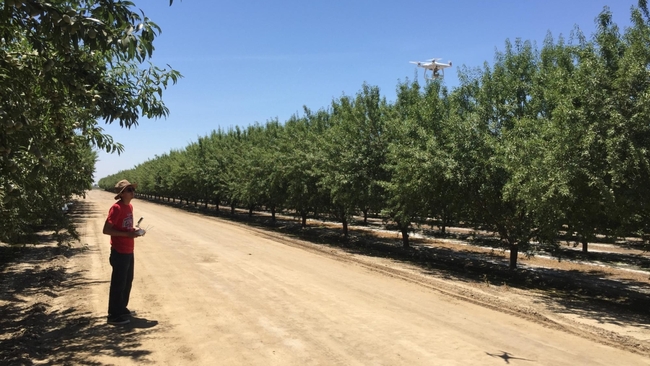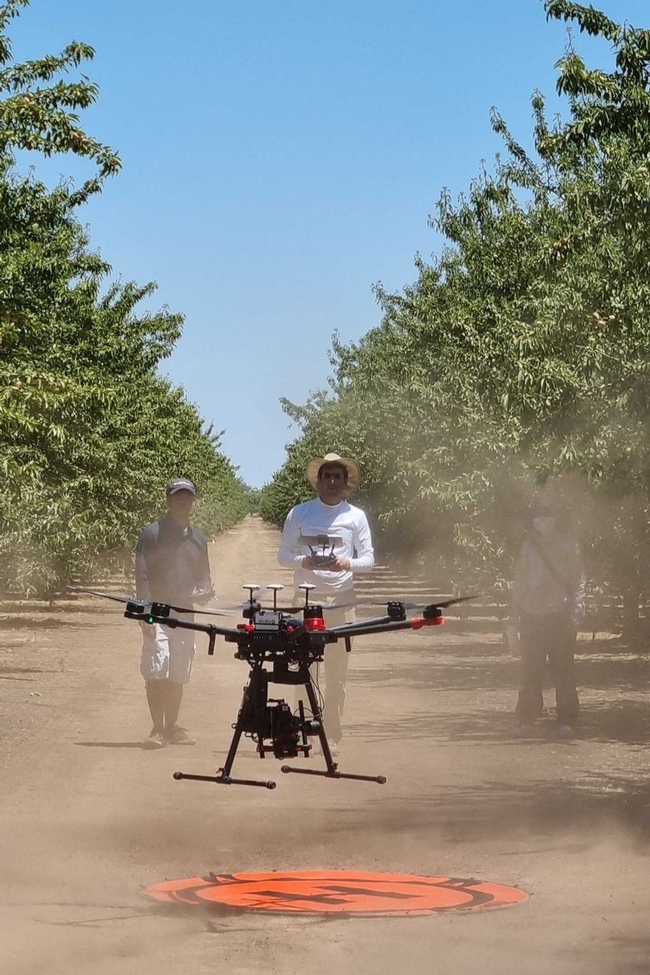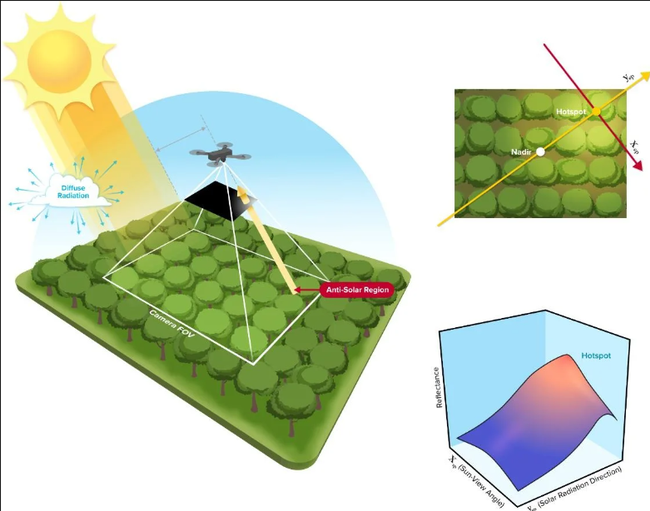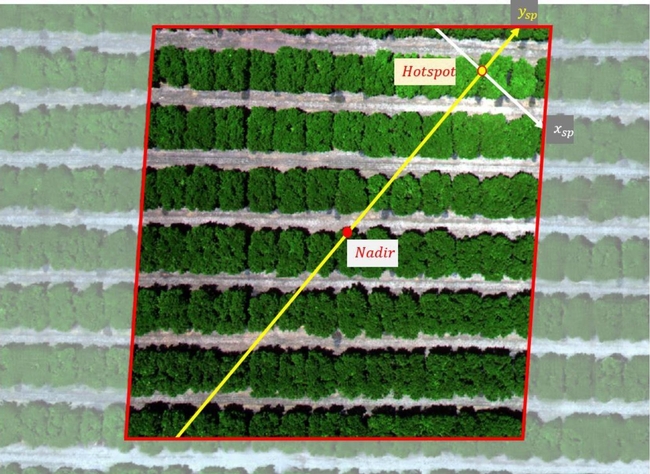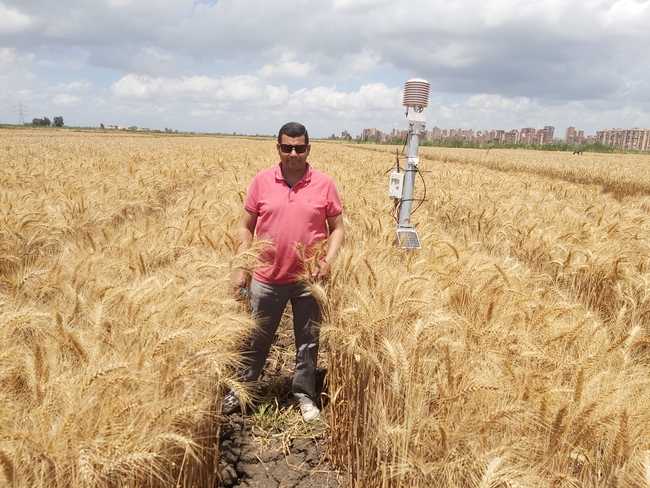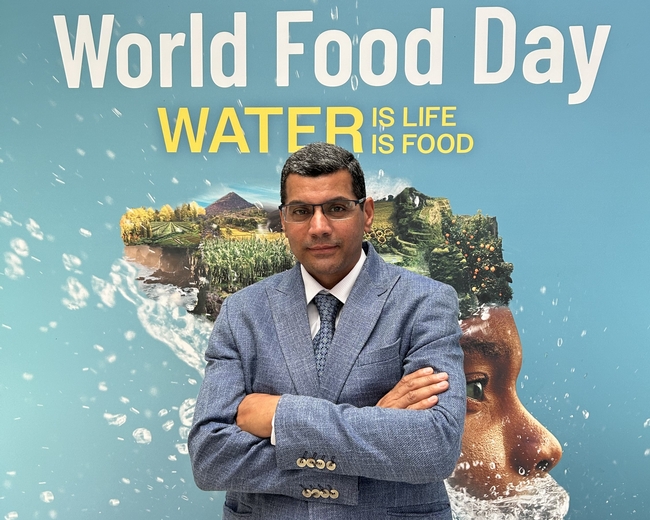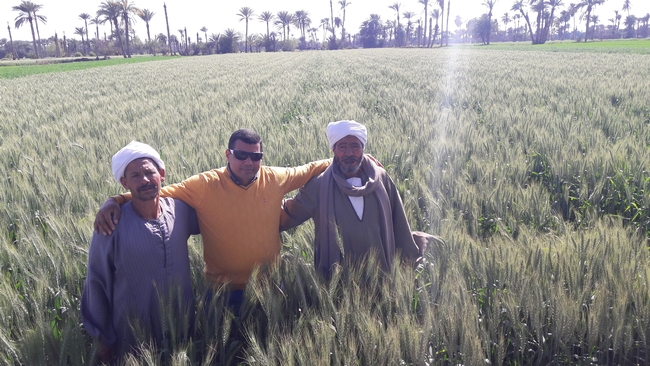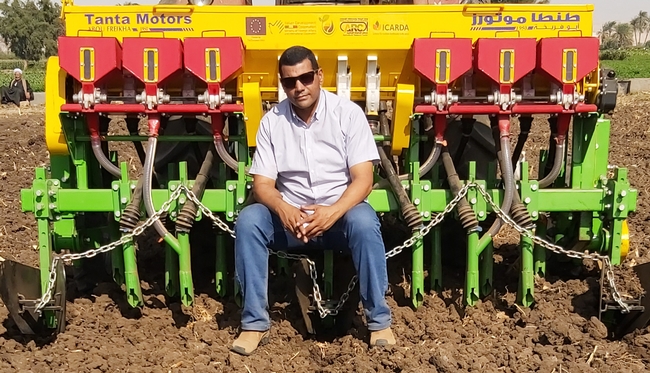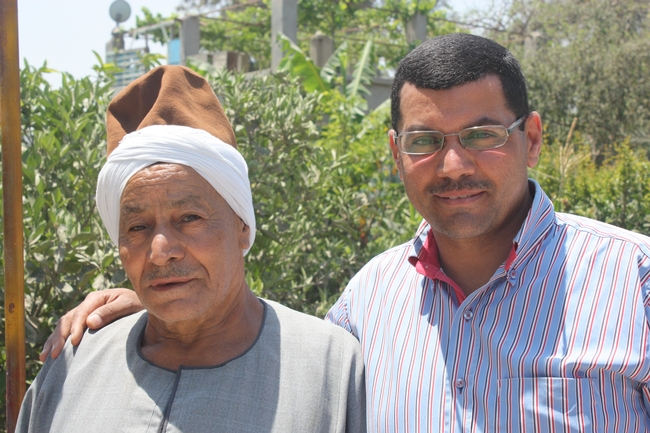Posts Tagged: agriculture
Winter season: A time for food safety systems re-evaluation and education for food hubs
The holiday meal season is often a busy time for food hubs – entities that handle the aggregation, distribution and/or marketing of source-identified regional food – as restaurants, retailers and consumers fill their tables and shelves with an abundance of fresh, local products. However, the subsequent winter months can provide a valuable time for reflection and re-evaluation of a food hub's systems and processes. In this spirit, it may be helpful to remind people working at food hubs that University of California Sustainable Agriculture Research and Education Program (UC SAREP) offers a suite of food-safety resources – in English and in Spanish – on its website.
- A step-by-step guide for food hubs on how to pursue a third-party food safety audit with guidance on how to navigate buyers' questions.
- Two sample food-safety plans intended as a starting point to be adapted to a food hub's specific operations and practices.
- Example standard operating procedure, or SOP, documents related to 11 common tasks carried out by food hubs.
“We hope these resources can play a role in helping food hubs to adopt best practices and control risks related to food safety,” says Gwenael Engelskirchen, sustainable food and farming coordinator with UC SAREP, who led the development of these educational tools.
According to the Centers for Disease Control and Prevention, approximately, 1 in 6 Americans (or 48 million people) gets sick and 3,000 die of foodborne diseases annually. In 2011, to help prevent the occurrence of foodborne illness, the federal government enacted the Food Safety Modernization Act (FSMA), designed to outline actions to be taken at various points along the supply chain for both human and animal food.
UC SAREP's Food Safety Resources for Food Hubs are intended to help food hubs navigate these food-safety regulations and accompanying best practices. Resources are also available in Spanish at Recursos de seguridad alimentaria para los centros de distribución de alimentos.
Food safety certification guide
Some buyers verify a supplier's food safety program by requiring an audit performed by a third-party certification body or auditing company. This Guide to Food Safety Certification offers key considerations before deciding to pursue a food safety audit and helps users navigate the food safety certification process.
Food safety plan
Food hubs that meet the criteria for full compliance with FSMA's Preventive Controls for Human Food Rule are required to have a food-safety plan in place. And for all food hubs, having a shared document describing the facility's operations and how potential risks of food contamination are managed is a good idea. Two sample food safety plans, inspired by the operations of food hubs in California, provide a starting point and can be adapted to a hub's own operations.
Standard operating procedures
Standard operating procedures provide detailed step-by-step instructions for how to carry out operational tasks within a food facility. The standard operating procedure samples cover common topics such as handwashing, facility cleaning and more, and are intended to be adapted to a food hub's specific operations and practices.
Jacob Weiss from Spork Food Hub in Davis said, “the templates were a great starting place for us to build the framework of our food safety plan. It helped us figure out what we needed to (and didn't) need to include. I think the SOPs are also really useful because they are broad enough to get you started but flexible enough to add the specific practices of your business or hub.”
For additional information, visit UC SAREP's webpages on Food Safety Resources for Food Hubs or Recursos de seguridad alimentaria para los centros de distribución de alimentos.
These resources and tools were developed in collaboration with various project partners, including Department of Food Science and Technology at UC Davis, Department of Population Health and Reproduction at UC Davis School of Veterinary Medicine, Center for Precision Medicine and Data Science at UC Davis Health, and Community Alliance with Family Farmers.
New UC studies estimate production and harvest costs for coastal apples
Two new studies that can help Central Coast growers and other readers estimate costs and potential returns for both organically and conventionally produced apples for processing were recently released by University of California Agriculture and Natural Resources, UC Cooperative Extension and the UC Davis Department of Agricultural and Resource Economics.
“These studies provide growers with a baseline to estimate their own costs, which can help when applying for production loans, projecting labor costs, securing market arrangements, or understanding costs associated with water and nutrient management and regulatory programs,” said Brittney Goodrich, UC Cooperative Extension specialist and co-author of the studies.
The new studies, “2023 Sample Costs to Produce and Harvest Organic Apples for Processing” and “2023 Sample Costs to Produce and Harvest Apples for Processing,” can be downloaded for free from the UC Davis Department of Agricultural and Resource Economics website at https://coststudies.ucdavis.edu.
The studies focus on processing apples, not fresh market apples, which makes a difference in farming practices. Apples grown for processing on the Central Coast are mostly pressed for juice and sparkling cider.
“Ready-to-eat means that looks matter – blemishes and so forth are a big deal. Juice not so much, it all gets smushed in the end,” said co-author Mark Bolda, UC Cooperative Extension farm advisor for Santa Cruz, Monterey and San Benito counties. “Varieties grown here are Gala, Newtown Pippins, Mitsui and some Granny Smith.”
The cost studies model a management scenario for a 100-acre farm, 20 acres of which are planted to a mature orchard that produces apples for processing. The remaining acres are planted to apples not yet in production, caneberries, strawberries and vegetables. In each study, the authors describe the cultural practices used for organically or conventionally produced apples, including land preparation, soil fertility and pest management, irrigation and labor needs. Harvest costs are also shown.
In six tables, they show the individual costs of each operation for apples, material input costs, and cash and non-cash overhead costs in a variety of formats. A ranging analysis shows potential profits over a range of prices and yields.
For a detailed explanation of the assumptions and calculations used to estimate the costs and potential returns for each crop, readers can refer to the narrative portion of each study.
For more information, contact Mark Bolda at mpbolda@ucanr.edu; Laura Tourte, emeritus UCCE advisor, at ljtourte@ucanr.edu; or Jeremy Murdock of UC Davis Department of Agricultural and Resource Economics at jmmurdock@ucdavis.edu.
Sample cost of production studies for many other commodities grown in California are also available for free at https://coststudies.ucdavis.edu
New pest infesting almonds and pistachios in the San Joaquin Valley
Crop sanitation will be key to controlling the invasive carpophilus beetle
Growers and pest control advisers (PCAs) should be on the lookout for a new pest called carpophilus beetle (Carpophilus truncatus). This pest was recently found infesting almonds and pistachios in the San Joaquin Valley, and is recognized as one of the top two pests of almond production in Australia. Damage occurs when adults and larvae feed directly on the kernel, causing reductions in both yield and quality.
Populations of carpophilus beetle were first detected in September in almond and pistachio orchards by University of California Cooperative Extension Specialist Houston Wilson of UC Riverside's Department of Entomology. Pest identification was subsequently confirmed by the California Department of Food and Agriculture.
Wilson is now working with Jhalendra Rijal, UC integrated pest management advisor, North San Joaquin Valley; David Haviland, UCCE farm advisor, Kern County; and other UCCE farm advisors to conduct a broader survey of orchards throughout the San Joaquin Valley to determine the extent of the outbreak.
To date, almond or pistachio orchards infested by carpophilus beetle have been confirmed in Stanislaus, Merced, Madera and Kings counties, suggesting that the establishment of this new pest is already widespread. In fact, some specimens from Merced County were from collections that were made in 2022, suggesting that the pest has been present in the San Joaquin Valley for at least a year already.
“It has likely been here for a few years based on the damage we've seen," Rijal said.
This invasive beetle overwinters in remnant nuts (i.e. mummy nuts) that are left in the tree or on the ground following the previous year's harvest. Adults move onto new crop nuts around hull-split, where they deposit their eggs directly onto the nut. The larvae that emerge feed on the developing kernels, leaving the almond kernel packed with a fine powdery mix of nutmeat and frass that is sometimes accompanied by an oval-shaped tunnel.
Carpophilus beetle has been well-established in Australia for over 10 years, where it is considered a key pest of almonds. More recently, the beetle was reported from walnuts in Argentina and Italy as well. Carpophilus truncatus is a close relative to other beetles in the genus Carpophilus, such as the driedfruit beetle (C. hemipterus) that is known primarily as a postharvest pest of figs and raisins in California.
Monitoring for carpophilus beetle is currently limited to direct inspection of hull split nuts for the presence of feeding holes and/or larvae or adult beetles. A new pheromone lure that is being developed in Australia may soon provide a better monitoring tool for growers, PCAs and researchers.
“We're lucky to have colleagues abroad that have already been hammering away at this pest for almost a decade,” said Haviland. “Hopefully we can learn from their experiences and quickly get this new beetle under control.”
The ability to use insecticides to control carpophilus beetle remains unclear. The majority of the beetle's life cycle is spent protected inside the nut, with relatively short windows of opportunity available to attack the adults while they are exposed. The location of the beetles within the nut throughout most of their life cycle also allows them to avoid meaningful levels of biological control.
In the absence of clear chemical or biological control strategies, the most important tool for managing this beetle is crop sanitation.
“Given that this pest overwinters on remnant nuts, similar to navel orangeworm, crop sanitation will be fundamental to controlling it,” Wilson said. “If you needed another reason to clean up and destroy mummy nuts – this is it.”
In Australia, sanitation is currently the primary method for managing this pest. And here in California, new research and extension activities focused on carpophilus beetle are currently in the works.
“It's important that we get on top of this immediately,” said Wilson. “We're already starting to put together a game plan for research and extension in 2024 and beyond.”
If you suspect that you have this beetle in your orchard, please contact your local UC Cooperative Extension farm advisor (https://ucanr.edu/About/Locations/), County Agricultural Commissioner (https://cacasa.org/county/) and/or the CDFA Pest Hotline (https://www.cdfa.ca.gov/plant/reportapest/) at 1-800-491-1899.
Researchers create app to help drones improve farm efficiency
When flown at the right times, drones can help farmers adapt to a changing climate
Researchers at the University of California, Davis, have developed a web application to help farmers and industry workers use drones and other uncrewed aerial vehicles, or UAVs, to generate the best possible data. By helping farmers use resources more efficiently, this advancement could help them adapt to a world with a changing climate that needs to feed billions.
Associate Professor Alireza Pourreza, director of the UC Davis Digital Agriculture Lab and postdoctoral researcher Hamid Jafarbiglu, who recently completed his doctorate in biological systems engineering under Pourreza, designed the When2Fly app to make drones more proficient and accurate. Specifically, the platform helps drone users avoid glare-like areas called hotspots that can ruin collected data.
Drone users select the date they plan to fly, the type of camera they are using and their location either by selecting a point on a map or by entering coordinates. The app then indicates the best times of that specific day to collect crop data from a drone.
Jafarbiglu and Pourreza, who is also a UC Cooperative Extension specialist of agricultural mechanization, said that using this app for drone imaging and data collection is crucial to improve farming efficiency and mitigate agriculture's carbon footprint. Receiving the best data — like what section of an orchard might need more nitrogen or less water, or what trees are being affected by disease — allows producers to allocate resources more efficiently and effectively.
"In conventional crop management, we manage the entire field uniformly assuming every single plant will produce a uniform amount of yield, and they require a uniform amount of input, which is not an accurate assumption," said Pourreza. "We need to have an insight into our crops' spatial variability to be able to identify and address issues timely and precisely, and drones are these amazing tools that are accessible to growers, but they need to know how to use them properly."
Dispelling the solar noon belief
In 2019, Jafarbiglu was working to extract data from aerial images of walnut and almond orchards and other specialty crops when he realized something was wrong with the data.
"No matter how accurately we calibrated all the data, we were still not getting good results," said Jafarbiglu. "I took this to Alireza, and I said, 'I feel there's something extra in the data that we are not aware of and that we're not compensating for.' I decided to check it all."
Jafarbiglu pored through the 100 terabytes of images collected over three years. He noticed that after the images had been calibrated, there were glaring bright white spots where they were supposed to look flat and uniform.
But it couldn't be a glare because the sun was behind the drone taking the image. So Jafarbiglu reviewed literature going back to the 1980s in search of other examples of this phenomenon. Not only did he find mentions of it, but also that researchers had coined a term for it: hotspot.
A hotspot happens when the sun and UAV are lined up in such a way that the drone is between the viewable area of the camera's lens system and the sun. The drone takes photos of the Earth, and the resulting images have a gradual increase in brightness toward a certain area. That bright point is the hotspot.
The hotspots are a problem, Jafarbiglu said, because when collecting UAV data in agriculture, where a high level of overlap is required, observed differences in the calibrated images need to come solely from plant differences.
For example, every plant may appear in 20 or more images, each from varying view angles. In some images, the plant might be close to the hotspot, while in others it may be situated further away, so the reflectance may vary based on the plant's distance from the hotspot and spatial location in the frame, not based on any of the plant's inherent properties. If all these images are combined into a mosaic and data are extracted, the reliability of the data would be compromised, rendering it useless.
Pourreza and Jafarbiglu found that the hotspots consistently occurred when drones were taking images at solar noon in mid-summer, which many believe is the best time to fly drones. It's an obvious assumption: the sun is at its highest point above the Earth, variations in illumination are minimal, if not steady and fewer shadows are visible in the images. However, sometimes that works against the drone because the sun's geometrical relationship to the Earth varies based on location and the time of year, increasing the chance of having a hotspot inside the image frame when the sun is higher in the sky.
"In high-latitude regions such as Canada, you don't have any problem; you can fly anytime. But then in low-latitude regions such as California, you will have a little bit of a problem because of the sun angle," Pourreza said. "Then as you get closer to the equator, the problem gets bigger and bigger. For example, the best time of flight in Northern California and Southern California will be different. Then you go to summer in Guatemala, and basically, from 10:30 a.m. to almost 2 p.m. you shouldn't fly, depending on the field-oriented control of the camera. It's exactly the opposite of the conventional belief, that everywhere we should fly at solar noon."
Grow technology, nourish the planet
Drones are not the only tools that can make use of this discovery, which was funded by the AI Institute for Next Generation Food Systems. Troy Magney, an assistant professor of plant sciences at UC Davis, mainly uses towers to scan fields and collect plant reflectance data from various viewing angles. He contacted Jafarbiglu after reading his research, published in February in the ISPRS Journal of Photogrammetry and Remote Sensing, because he was seeing a similar issue in the remote sensing of plants and noted that it's often ignored by end users.
"The work that Hamid and Ali have done will be beneficial to a wide range of researchers, both at the tower and the drone scale, and help them to interpret what they are actually seeing, whether it's a change in vegetation or a change in just the angular impact of the signal," he said.
For Pourreza, the When2Fly app represents a major step forward in deploying technology to solve challenges in agriculture, including the ultimate conundrum: feeding a growing population with limited resources.
"California is much more advanced than other states and other countries with technology, but still our agriculture in the Central Valley uses technologies from 30 to 40 years ago," said Pourreza. "My research is focused on sensing, but there are other areas like 5G connectivity and cloud computing to automate the data collection and analytics process and make it real-time. All this data can help growers make informed decisions that can lead to an efficient food production system. When2Fly is an important element of that."
This article was originally published on the UC Davis College of Engineering News page.
From Sharqia to Rome to Fresno: Renowned irrigation expert comes to UC ANR
Atef Swelam begins as director of Kearney and West Side Research and Extension Centers
In the fields around the Egyptian city of Minya Al-Qamh, “port of wheat” in Arabic, a boy rubbed his eyes wearily as he helped his father irrigate their crops at 2 a.m. – when they could access the scarce water that reached their farm, located at the tail end of the canal. The family, which had been farming the land around the village of Sharqia for many generations, barely had enough water to sustain their wheat and vegetables.
Swatting in the darkness at the incessantly biting mosquitoes, a young Atef Swelam made a vow.
“I said: ‘I will do my best to not let anyone suffer like I have suffered, like my father suffered – I will help to improve the lives of others,'” recalled Swelam, who went on to become an irrigation engineer improving water-use efficiency.
During the World Food Forum (Oct. 16-20), Swelam was recognized by the United Nations' Food and Agriculture Organization as a “Water and Food Hero” for developing irrigation techniques that save water and boost yields across the Nile Delta and beyond.
Swelam started on Aug. 10 as director of both the Kearney Agricultural Research and Extension Center in Parlier and the West Side REC in Five Points. Both facilities are part of a network of centers operated by University of California Agriculture and Natural Resources.
“Our organization, and more importantly the communities we serve in the Central Valley and across California, are so fortunate that Atef has joined our team,” said Brent Hales, UC ANR associate vice president for research and Cooperative Extension. “He brings not only a record of truly impactful research and innovation but a genuine passion for learning the needs of people, working with them and developing collaborative, science-based solutions.”
Making a difference in the lives of people
After earning his master's degree in land and water management from the Mediterranean Agronomic Institute of Bari in Italy, Swelam returned to Egypt for his Ph.D. in agricultural engineering at Zagazig University. There, he advanced to become a professor of irrigation and drainage engineering in 2019; he was also a senior scientist and research team leader with the International Center for Agricultural Research in the Dry Areas (CGIAR-ICARDA). Most recently, Swelam was the agricultural research officer of the U.N.-FAO's Office of Innovation in Rome.
Swelam explained that the mandate, function, mission and vision of UC ANR's research and extension network – and its strong reputation for making an impact through co-creation with clientele – attracted him to this position in California.
“I'm always looking to make a difference on the ground and in the lives of people,” he said. “If you look at the locations where all RECs are located, they are inside the communities themselves, and in the heart of the farming system.”
Swinging between Kearney and West Side RECs, Swelam said he feels he works in an empowering environment, created and supported by the leadership as well as by the staff at both centers – “a dynamic is which hard to find elsewhere.”
Darren Haver, recently named director of the statewide system of RECs, said he will work with Swelam to explore ways to secure the resources that the Kearney and West Side teams need.
“Atef brings a wealth of experience in conducting research as well as working to elevate and amplify the research and outreach of others,” said Haver, formerly the director of South Coast REC in Irvine. “He clearly is committed to making a difference locally, nationally and globally and we are excited to support him as his vision for these two RECs evolves.”
Being a farmer and a scientist, Swelam feels he is on the same wavelength with both of the RECs' clientele groups – researchers and growers. In his first months on the job, Swelam said he will get to know the needs of the grower community and the researchers at the RECs.
“What I like most about this job is that the REC system, with its research for development approach, supports the scientists, who are in turn supporting the farmers and communities that are on the front line in achieving food and nutrition security,” he explained.
When tailoring solutions to meet local conditions, Swelam added that it's essential that community members are involved so they feel a sense of ownership and are committed to sustaining its impact beyond the time limits of a research or extension project.
Innovative irrigation technique used worldwide
A prominent example of Swelam's community-based work is his long-term mechanized raised-bed (MRB) irrigation program, the technology for which he has garnered numerous international honors.
While he was a researcher at the CGIAR-ICARDA, Swelam led several projects between 2010 and 2020 to study new soil and water practices at farm level. Through a project at his home village, he developed a cost-effective, small-scale machine to enable growing wheat on raised beds. This was in contrast to flat flooded land – the traditional, labor- and resource-intensive method that produced irrigation inefficiencies and caused shortages for downstream farmers like his father, Haj Ibrahim.
With MRB, precisely placed trenches between the raised beds would hold exactly the amount of water the adjacent crops need and thus leave more water for all. And while the technique seemed promising, Swelam had to convince skeptical farmers to adopt the practices – including his neighbors and his own father.
“He was very resistant to me in the beginning, because this was the first time ever in Egypt using raised beds for wheat cultivation…he even tried to convince people not to follow me,” Swelam said, with a chuckle.
So father and son divided their fields, with one half planted and irrigated using traditional methods, and the other using the raised-bed approach. Gradually, as MRB began to prove its worth, Haj Ibrahim warmed to the technology and became an active collaborator on the research – even helping the scientist when he was puzzled by experiment results.
“My father was my mobile library,” Swelam said. “He was illiterate – he had never been in a school – but his thinking and knowledge about the real agriculture and farming system were much better than those of a professor like me!”
After the initial research trials produced successes in his village and the larger governorate (a political division within Egypt), the technique was replicated in other governorates across the country – which then attracted the attention of other nations and international organizations.
Overall, Swelam said, the technology helped the growers reduce applied water by 25% and cut farming costs by 25%, while boosting fertilizer use efficiency by 30% and increasing yield by 25%.
Today, MRB is applied by more than 2 million farmers in the Middle East and North Africa to a variety of crops and is recognized as a good agricultural practice by the U.N. Food and Agriculture Organization.
“The biggest recognition and reward for me out of this impactful innovation is seeing the smiles on the faces of farmers,” Swelam said.
Spreading best practices across San Joaquin Valley and beyond
Swelam said he hopes to see similarly positive results for farmers here in California with a wide range of innovations. He and other researchers at Kearney and West Side RECs will continue to make sure that the science and knowledge generated at the centers reach farmers. He added that partnering with local growers to optimize their on-farm practices is crucial on a host of issues, from pest management to water conservation.
“Whatever we do to improve supply management at system level, if the water is not used efficiently at farm level, then we lose everything we had achieved at that macro level,” he explained.
Swelam added that investing intensive time and effort in developing practical, cost-effective solutions will pay off in the long run as they become naturally adopted across the grower community.
“Farmers are very clever and skilled with their farming systems,” he said. “When they see or get benefits from something, they promote it among themselves.”
Swelam's father was one example. After leading the resistance against mechanized raised beds initially, he eventually became its most vocal proponent.
“He became the biggest promoter for this technology; he even promoted it on local and international TV and radio programs,” Swelam said. “I was proud of my father.”
Haj Ibrahim died in 2017 and Swelam continues to pay tribute to his father through his life's work on research and extension – inspired by their long struggles to bring water to their crops, and the shared triumph of their new techniques.


